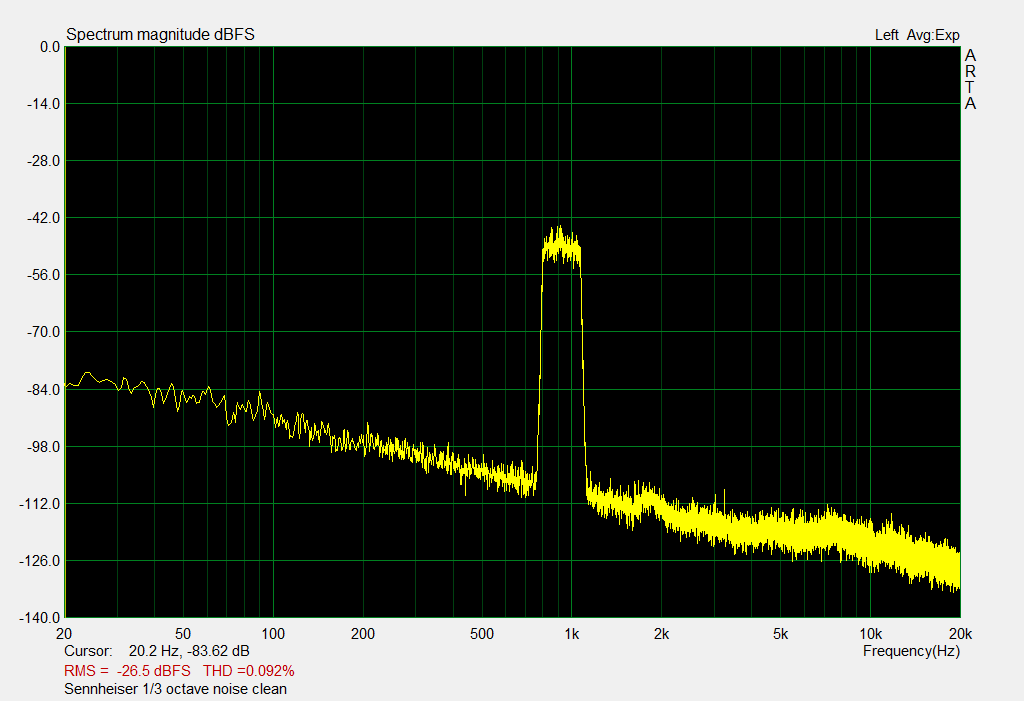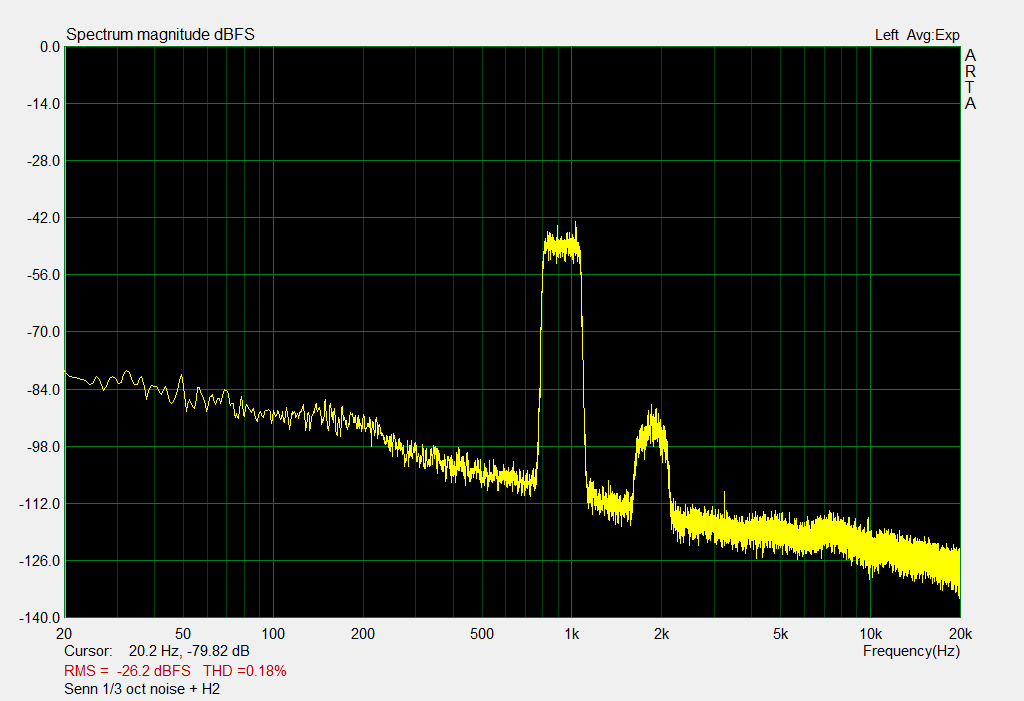mp3? wave? I can't seem to open this file with Cool Edit with either extension. All the others are fine.
Monophonic wav.
Would you try to download the zip file once more, I have converted the files to stereo.
Both 2nd harmonic and 3rd harmonic distortion of 1/3 octave noise provided should be easily audible for you in the ABX test, with 100% success.
Yes, these are very obviously different even without ABX.
Yes, I agree. ABX for those who doubt everything, though the differences are obvious.
Noises of different kinds are very helpful in finding audibility of distortions. Wideband white noise reveals linear distortions - changes in frequency response. Narrowband 1/3 octave noise is sensitive to nonlinear distortions, even low level. Please note how 2nd harmonic distortion of 0.6% had reduced usable dynamic range.
I think that in times of tapes and LPs this was inaudible because of masking by tape hiss and vinyl noise. 2nd harmonic distortion was considered non harmful. But the intermodulation part, which is inevitable for every nonlinear distortion (just another view of the same issue) was overlooked. Digital offers much higher dynamic range so this intermodulation effect becomes obvious. Maybe the 2nd harmonic distortion remains "favorite", because it smears the signal and creates seeming "richness" in the low part of frequency band?
Noises of different kinds are very helpful in finding audibility of distortions. Wideband white noise reveals linear distortions - changes in frequency response. Narrowband 1/3 octave noise is sensitive to nonlinear distortions, even low level. Please note how 2nd harmonic distortion of 0.6% had reduced usable dynamic range.
I think that in times of tapes and LPs this was inaudible because of masking by tape hiss and vinyl noise. 2nd harmonic distortion was considered non harmful. But the intermodulation part, which is inevitable for every nonlinear distortion (just another view of the same issue) was overlooked. Digital offers much higher dynamic range so this intermodulation effect becomes obvious. Maybe the 2nd harmonic distortion remains "favorite", because it smears the signal and creates seeming "richness" in the low part of frequency band?
1/3 octave noise signals recorded through microphone from Sennheiser HD595 headphones. Pure noise and noise with 2nd harmonic added. We can see that the headphones are easily able to make a difference between the 2 signals. And our ears as well.




- Status
- Not open for further replies.